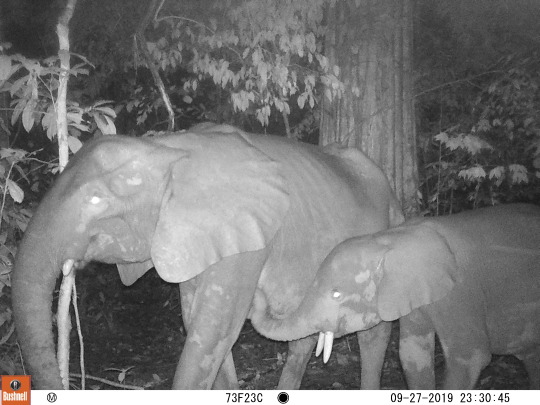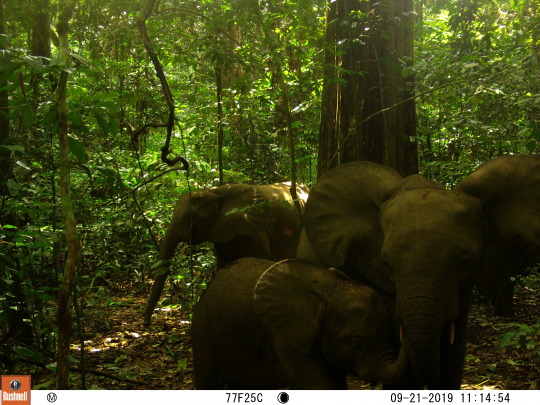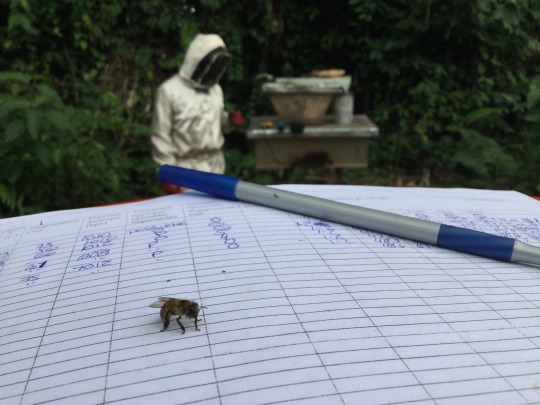The summer of 2019 marked my second field season for data collection in Campo-Ma’an conservation area as part of my doctoral thesis. My study focuses on “Human- Wildlife Conflicts around Campo-Ma’an National Park” and is conducted under the supervision of Dr. Robert Weladji in the Ecology and Conservation Lab at Concordia University. Similar to my field work during the summer of 2018, I was accompanied by Valerie Michel, veterinary technician of the Zoo de Granby with whom I spent four months in rural areas, far from the comfort of modern life. Together, we worked ontrying to understand how the daily active bees (Apis mellifera adansonii) can repel the nocturnal forest elephants (Loxodonta cyclotis), from destroying crops in Campo. In the present study we use camera traps to monitor the occurrence of elephants in different vegetation covers, while observing changes in plant phenology. We also tested the effectiveness of the bee colonies through an experimental design.

Robert and Isaac visiting a camera trap site for forest elephant movement monitoring.

Adult female and a sub-adult elephant visiting a fruit tree at night.
With the use of our camera traps for monitoring, we were able to gain insight on the wildlife diversity in this conservation area. Within a month under a fruiting tree, we got 2055 pictures of animals from different species with only 3 pictures of elephants. The next month, the number of images from the same location dropped drastically, suggesting that the presence of fruits at a particular site increases the rate of visits of many animal species.
Although we are in an equatorial forest area, elephants feed on grasses as seen in the image below. They use logging tracks, logging decks, felling gap and probably cropping lands for this feeding behavior.

This picture is from a camera not far from a village and shows individual elephants from different age ranges feeding on fruits.
This field season taught me a lot more about the activities of bee colonies. In fact, we observed that at night they are unable to fly to physically attack their enemy as they would do during the daytime.

Valerie Michel (right) and Isaac (left) in a banana plantation wearing beekeeping suits a few minutes before disturbing the bees.

Field data sheet with a bee after disturbances.
As we measured the buzzing sound for analysis while disturbing the colonies, we realised that they are vulnerable at night. Instead of flying to attack their enemy, they only buzz thoroughly producing sound that can be variably perceived at different distances from their hive. Unfortunately, the sound produced may go unheard by an animal coming to the farm because of how noisy the forest is early in the night with sounds from several other animals.

Isaac Blaise Djoko is a PhD student in ecology and conservation in Robert Weladji’s Lab at Concordia University and associate researcher at Zoo de Granby in Canada. His professional career started in the field of conservation and forest management in Cameroon, making him passionate about the sustainable management of natural resources. The conservation of mammals, forest elephants in particular, in sharing space is his focus.

0 Comments